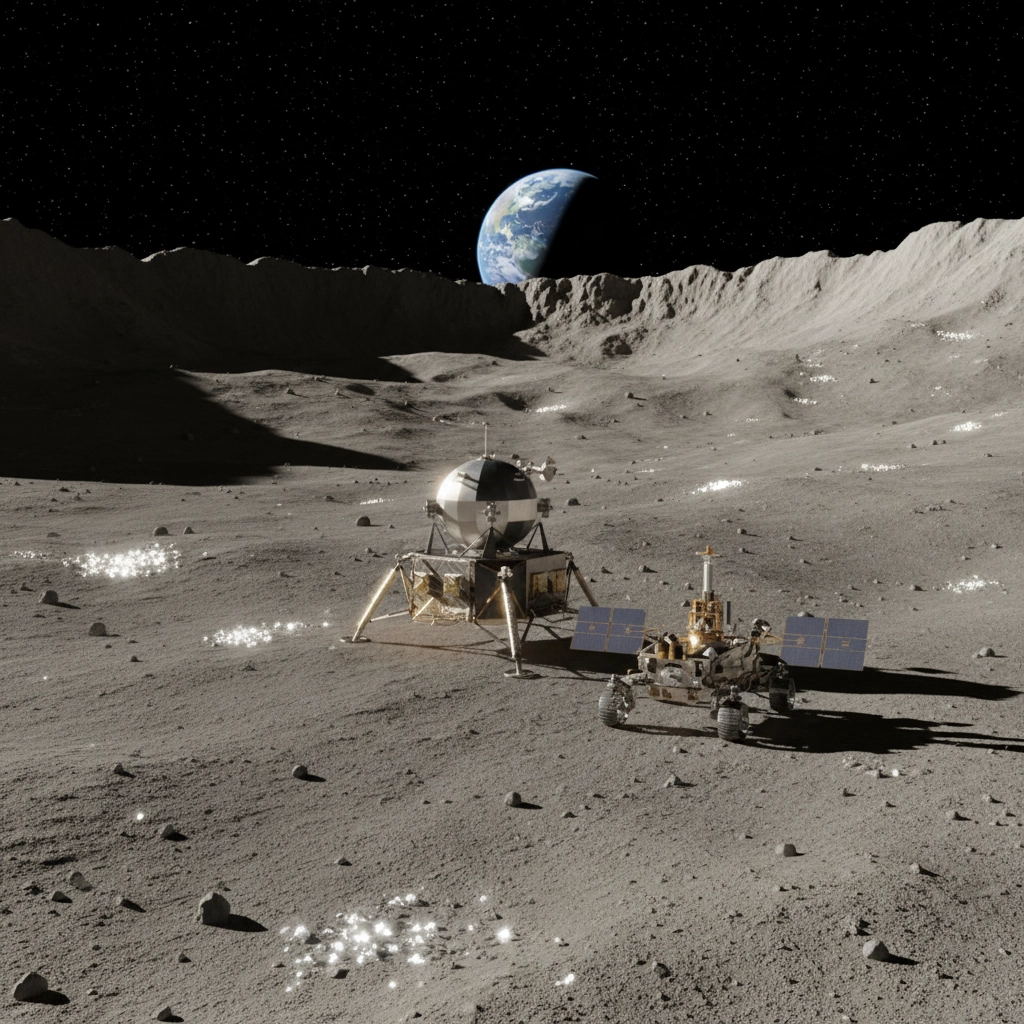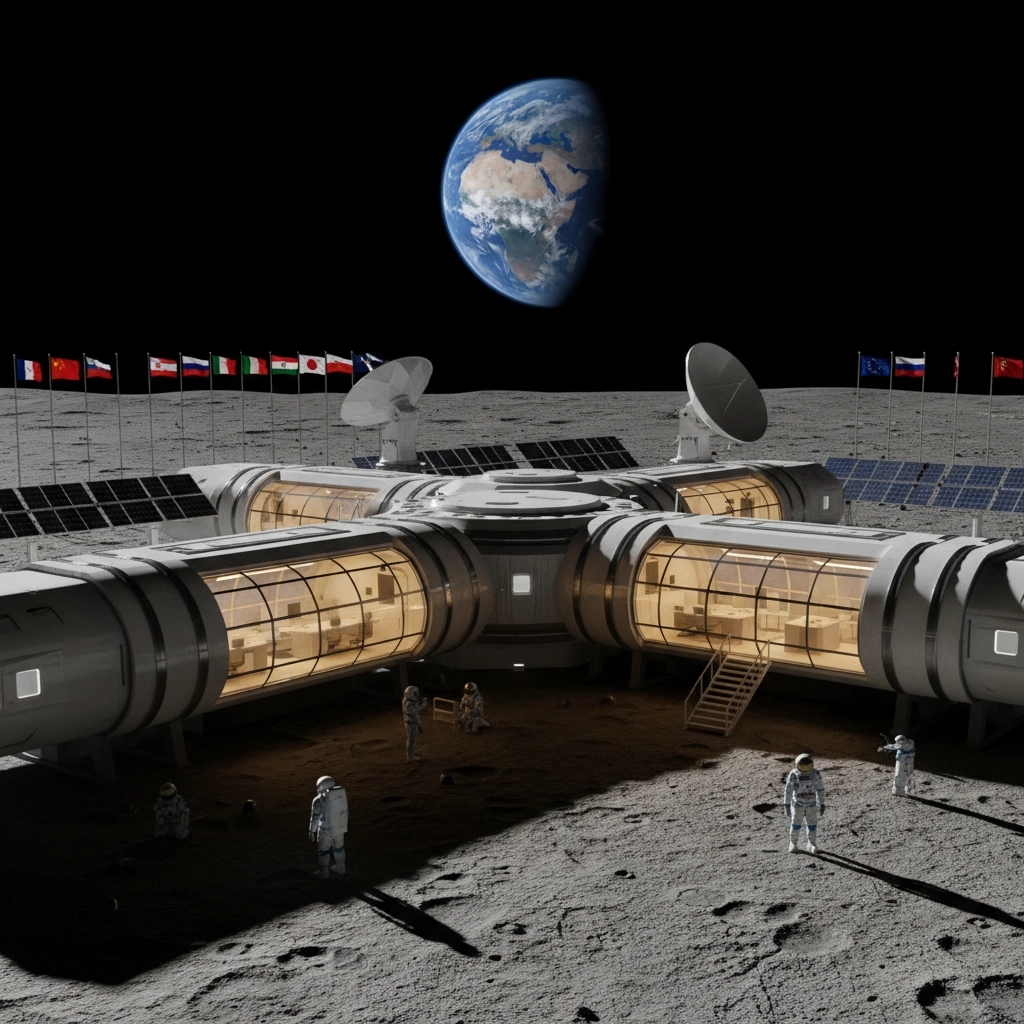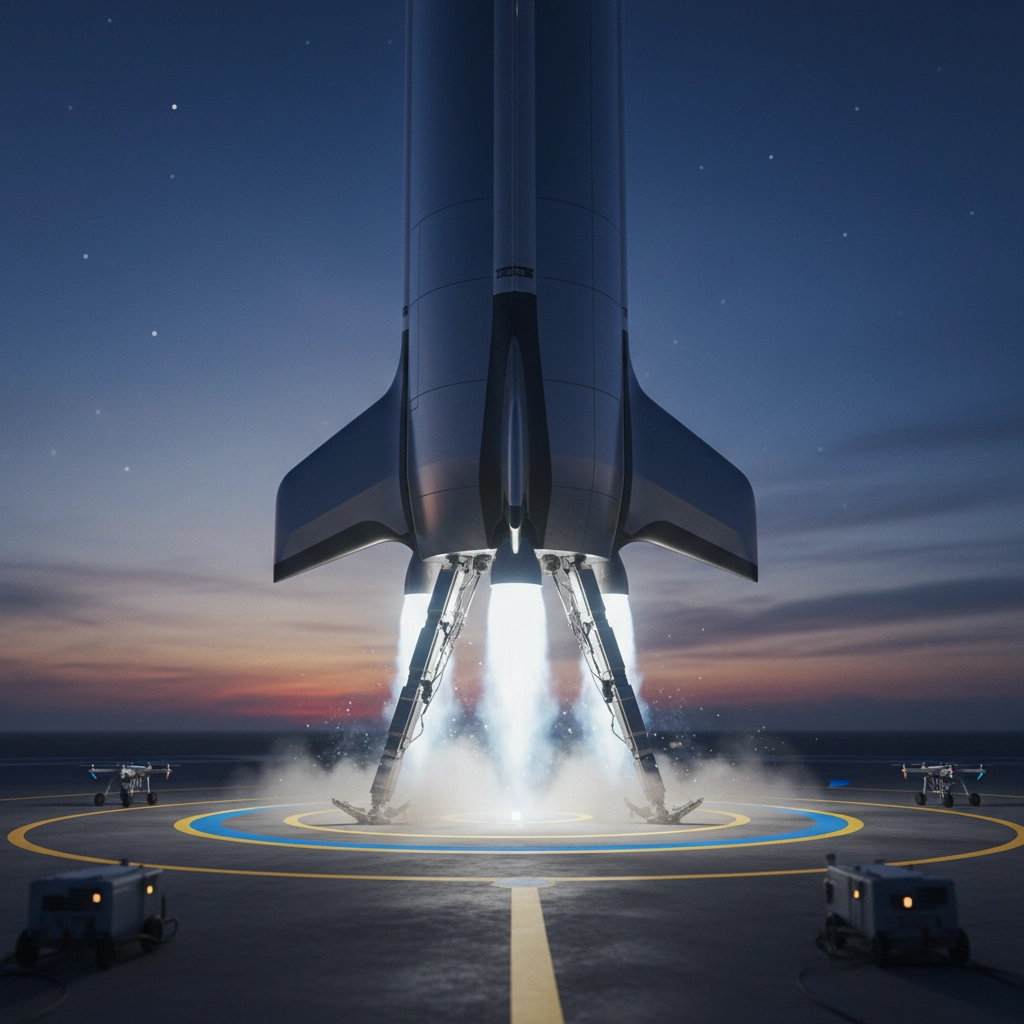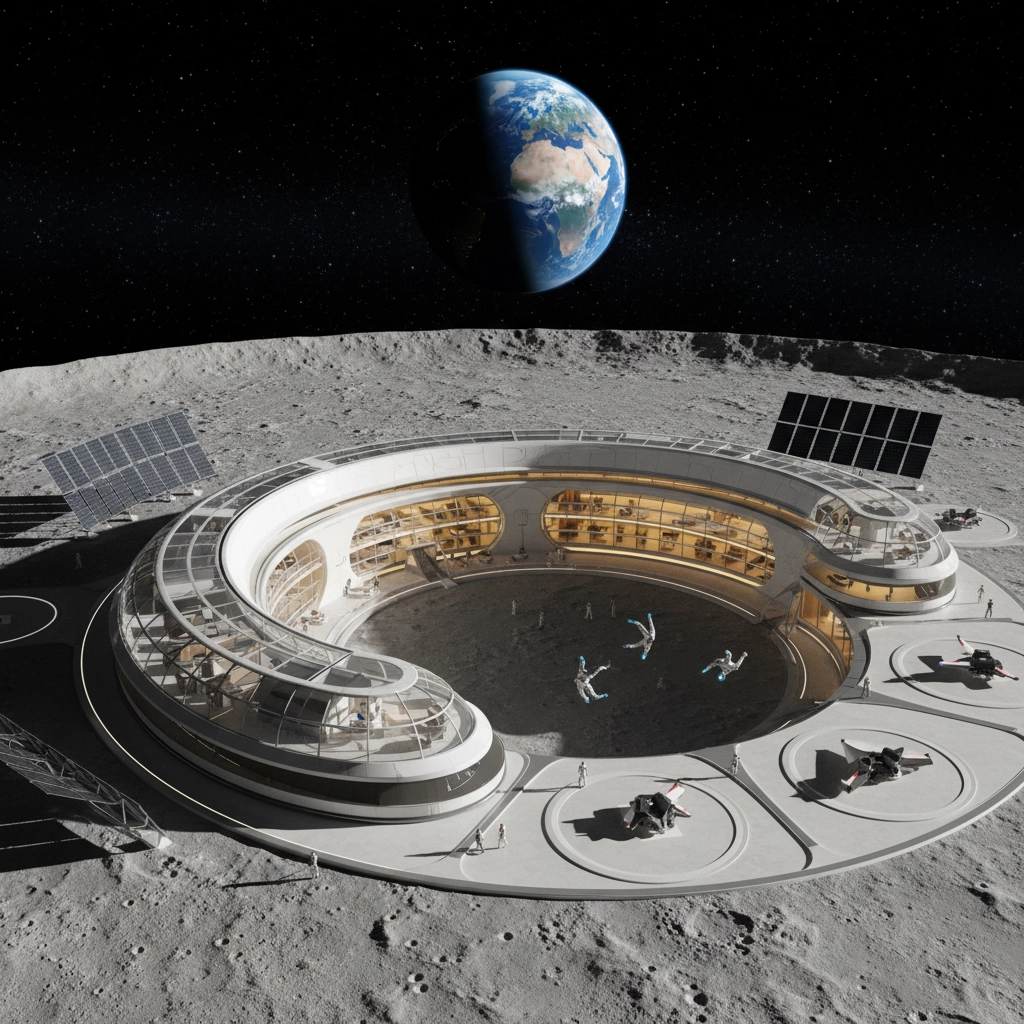Have you ever wondered what it would be like to sip morning coffee while gazing at Earth from a lunar research station? Thanks to China's ambitious space program, that dream might be closer to reality than you think. In October 2025, China has been making headlines with groundbreaking announcements that could fundamentally reshape how we explore and eventually visit the Moon.
Chang'e-7: The Game-Changing Water Hunt
China's upcoming Chang'e-7 lunar mission represents a pivotal moment in space exploration. This isn't just another robotic landing – it's specifically designed to be the first mission to definitively discover and analyze water resources on the Moon's surface. The mission will target the lunar south pole, where scientists believe substantial water ice deposits lie hidden in permanently shadowed craters.
Why does this matter for space tourism? Water on the Moon means everything changes. Instead of hauling every drop of water from Earth at astronomical costs, future lunar visitors could potentially use local resources. Water can be split into hydrogen and oxygen for rocket fuel, consumed for drinking, and used for radiation shielding. Essentially, Chang'e-7 could unlock the Moon as a sustainable destination rather than just a quick visit.

The mission's international partnerships are equally exciting. Countries from across the globe are contributing instruments and expertise, creating a collaborative approach that benefits everyone involved. This cooperative spirit suggests that when lunar tourism becomes mainstream, it won't be dominated by a single nation but will offer opportunities for travelers from around the world.
The International Lunar Research Station: A Multinational Moon Base
Perhaps the most ambitious aspect of China's space ambitions is the International Lunar Research Station (ILRS), planned for completion by 2035. Think of it as the International Space Station's bigger, more permanent cousin – but on the Moon.
This isn't science fiction anymore. The ILRS will be a fully operational research facility where astronauts from multiple countries can live and work for extended periods. The station will serve as humanity's first permanent foothold on another world, complete with living quarters, laboratories, and potentially even recreational facilities.
For space tourism, this development is revolutionary. The ILRS could serve as a destination hotel, offering visitors the chance to experience lunar gravity, witness Earthrises, and participate in genuine scientific research. Imagine booking a space vacation where you contribute to real lunar discoveries while enjoying the ultimate adventure.

The international nature of the project means diverse perspectives, shared costs, and broader access. Rather than being limited to astronauts from a single space agency, the ILRS could welcome researchers, tourists, and adventurers from dozens of countries.
Reusable Rockets: Making Space Affordable
China's significant strides in reusable rocket technology, particularly with LandSpace's Zhuque-3 rocket, are quietly revolutionizing space access. While SpaceX often dominates headlines about reusable rockets, China's approach focuses on different design philosophies that could complement existing technologies.
Reusable rockets dramatically reduce launch costs by allowing the same vehicle to fly multiple missions. Instead of throwing away a multi-million-dollar rocket after one use, companies can refurbish and refly them dozens of times. This cost reduction is crucial for making space tourism accessible to more people.
The Zhuque-3's development suggests that China is serious about creating a competitive launch market. More competition typically means lower prices and better service – excellent news for anyone dreaming of their own space adventure. As these technologies mature, what costs hundreds of thousands of dollars today could become accessible to middle-class adventurers within the next decade.
How This Changes Everything for Space Tourism
China's lunar ambitions create ripple effects that extend far beyond government space programs. When the ILRS becomes operational, it will need regular supply missions, crew rotations, and maintenance visits. This creates a steady stream of lunar traffic that could easily accommodate paying passengers.
Consider the tourism potential: lunar hotels built near the research station, guided tours of historic landing sites, and unique experiences like low-gravity sports that are impossible on Earth. The Moon's lack of atmosphere means perfect stargazing conditions – imagine looking at the cosmos from a lunar observatory without any atmospheric interference.

Water discovery through Chang'e-7 makes longer stays feasible. Instead of packing everything for a three-day lunar visit, tourists could potentially spend weeks exploring different regions, participating in research, or simply enjoying the incredible views. The psychological impact of seeing Earth as a small blue marble in the vast blackness of space is something that astronauts consistently describe as life-changing.
The Broader Space Tourism Revolution
China's space ambitions align perfectly with growing global interest in space tourism. Companies worldwide are developing everything from suborbital flights to orbital hotels, and China's lunar infrastructure could serve as the next logical step in this progression.
The timeline is remarkably aggressive yet achievable. Chang'e-7 launches soon, the ILRS construction begins in earnest by 2030, and full operations start by 2035. That's just over a decade away – close enough that people planning their retirement today could genuinely consider lunar tourism as a real option.
International cooperation also means shared expertise and reduced risks. When multiple countries contribute to lunar infrastructure, the resulting systems tend to be more robust and reliable. This collaborative approach could accelerate development while maintaining the highest safety standards essential for tourism operations.
What This Means for You
China's lunar exploration efforts represent more than national prestige – they're building the foundation for a new era of human space activity. The combination of water resources, permanent infrastructure, and reusable transportation creates the perfect storm for making lunar tourism economically viable.

If you've ever looked up at the Moon and wondered what it would be like to visit, China's current activities suggest that question might have a practical answer sooner than expected. The infrastructure being built today could host tourists tomorrow, and the international nature of these projects means opportunities won't be limited to citizens of any single country.
The space tourism industry is evolving rapidly, with costs dropping and options expanding. While current space tourism prices remain high, China's infrastructure developments suggest lunar visits could eventually cost less than today's orbital flights.
For space enthusiasts, these developments represent validation that the golden age of space exploration isn't just beginning – it's accelerating. China's leap forward in lunar exploration doesn't just change the game; it creates an entirely new playing field where the Moon becomes humanity's second home rather than just a destination to visit.
Therefore, China's ambitious space program benefits everyone interested in space exploration and tourism. As these projects mature over the next decade, they'll create opportunities that seemed purely fictional just a few years ago. The future of lunar exploration isn't just changing – it's arriving faster than anyone expected.
Ready to stay updated on the latest developments in space tourism? Visit RocketBreaks for the most current news about space travel opportunities and emerging destinations beyond Earth.
